
Gramm: Despite ‘Official’ Poverty Rate of Over 11% in the U.S., Actual Poverty Is Quite Low
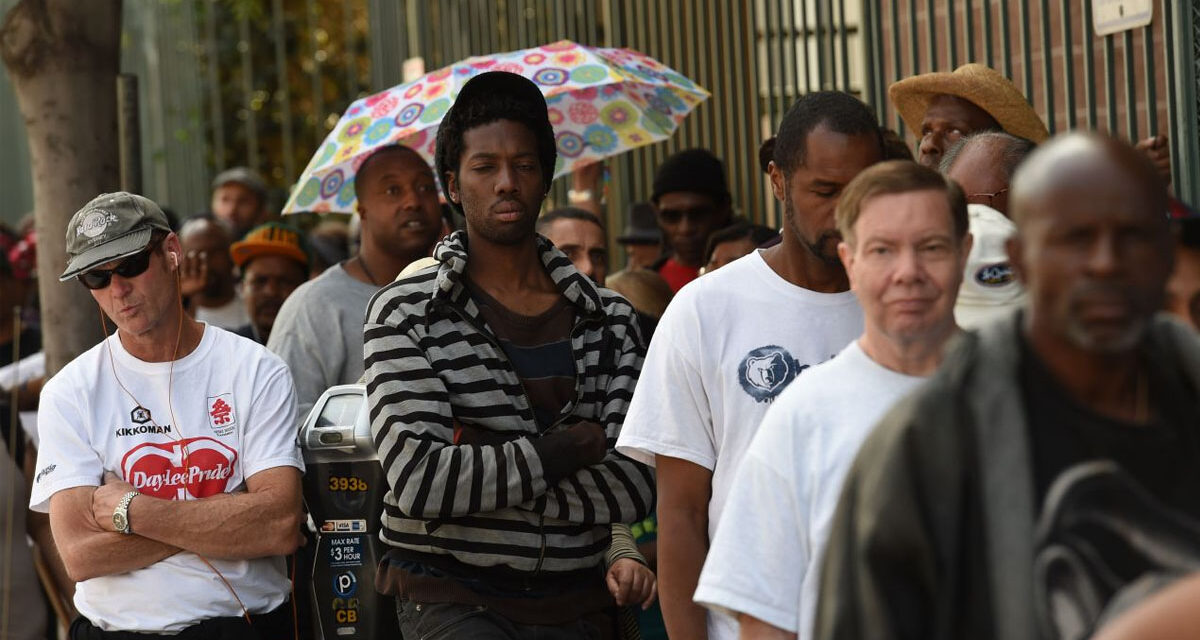
Former Senator Phil Gramm has made a strong case that the United States has a poverty measurement problem, not a poverty crisis. According to Gramm, “the Census Bureau’s measures of household income and poverty… have for decades overstated the extent of poverty because [they don’t] count as income 88% of transfer payments made to households classified as poor.” In other words, the federal government defines poverty in a way that ignores most of the financial help it already provides to low-income Americans.
This approach has led to misleading poverty statistics that continue to justify enormous government spending. While it may appear that poverty in the U.S. has remained unchanged for decades, the reality is that far fewer people are actually living in true material deprivation. Understanding the difference between reported poverty and real poverty is essential to having an honest conversation about public welfare, economic justice, and federal spending.
The Official Poverty Measure
The United States government measures poverty using two main tools: the official poverty measure and the Supplemental Poverty Measure (SPM). The official measure, created in the 1960s, compares a household’s pre-tax cash income to a national poverty threshold. This threshold varies depending on family size and composition. In 2023, the official poverty rate stood at 11.1%, which translates to about 36.8 million Americans being classified as poor.
For example, the poverty guideline for a family of four in 2025 is $32,150. If a family earns less than this amount in pre-tax income, they are considered to be living in poverty. But this number doesn’t tell the full story.
The Census Bureau’s official measure does not count government aid such as food stamps (SNAP), housing subsidies, Medicaid, or refundable tax credits. As Gramm and John Early explained, “Inflation-adjusted government transfer payments to those being classified as poor are almost 20 times greater in real purchasing power than they were when the War on Poverty began.” Yet, because these resources are excluded from income calculations, the poverty rate appears to remain stuck around 11% year after year.
What the Supplemental Poverty Measure Adds
To address some of these flaws, the government introduced the Supplemental Poverty Measure in 2011. The SPM includes non-cash government benefits such as SNAP and housing assistance and adjusts for geographic differences in housing costs. It also takes taxes, medical expenses, and work-related costs into account. Still, even this improved measure does not capture the full picture. In 2023, the SPM showed a poverty rate of 12.9%, which was actually higher than the official rate.
In 2023, the Census reported that the SPM child poverty rate rose to 13.7%, and “Social Security continues to be the largest anti-poverty program, moving 27.6 million individuals out of SPM poverty.” However, this still does not reflect how radically government aid has transformed living conditions for the poorest Americans. Both measures fall short because they still underestimate the total value of aid provided.
A More Accurate View from the CBO
A better estimate comes from the Congressional Budget Office (CBO), which released a report in January 2023 that uses a more complete definition of income. The CBO counts more transfer payments than the Census and considers their effect on actual household resources. According to this more accurate measure, the poverty rate in 2021 was just 0.8%. This finding confirms what earlier independent studies had already shown: the number of Americans living in true poverty is very small.
Gramm and Early explain that “the Census has stonewalled the CBO finding and has not even acted on its own recent study showing that the official poverty count is five million too high.” In fact, they argue that because the government continues to use this flawed measure, “families defined as poor receive $257 billion more a year than is required to lift them out of poverty.”
What Is Not Counted as Income
One of the biggest flaws in the poverty measurement is that many types of government aid are simply ignored. These include:
- Medicaid: Free or low-cost health insurance that is not counted as income, even though it saves families thousands of dollars in medical bills.
- Supplemental Nutrition Assistance Program (SNAP): Monthly benefits to buy food, also not counted.
- Refundable tax credits like the Earned Income Tax Credit (EITC): These are cash payments to families that often exceed their tax liability, yet they are not included in income.
- Housing assistance, energy assistance, and free school meals.
- Over 100 other state, federal, and local programs that help low-income families meet basic needs.
As a result, the official poverty measure often shows that a household is poor, even if it receives tens of thousands of dollars in government aid. Gramm and Early point out that if all benefits were counted, the average income of the bottom fifth of households would be over $65,000, not the $17,650 currently reported.
Programs That Help the Non-Poor
Another problem is that these programs often serve people who are not actually poor. Gramm and Early explain that “$1.48 trillion in welfare payments a year go to families that weren’t poor before receiving welfare benefits.” Programs like Medicaid have expanded so much that in some states, families with incomes up to 319% of the poverty level (which is $102,559 for a family of four) can qualify.
Similarly, the IRS provides refundable tax credits without considering whether the recipient is already receiving other forms of aid. Food stamp eligibility is also expanded in some states. California allows people earning up to 200% of the poverty line to receive benefits. States often grant automatic food stamp eligibility to anyone receiving other welfare, regardless of income level.
Because these programs are based on income definitions that leave out other forms of assistance, many people qualify for multiple programs even if their total resources would place them well above the poverty line.
Real Poverty Is Not Comparable to Global Poverty
When comparing poverty in the U.S. to that in other countries, it’s important to realize that American poverty is not the same as poverty elsewhere. In many parts of the world, poverty means no food, no shelter, and no access to clean water. In the U.S., people classified as poor may have access to healthcare, housing assistance, food programs, and cash payments.
Gramm and Early argue that “the poverty measure today isn’t consistent with [the original] definition because it fails to count the more than $2 trillion in government benefits that are given to low-income households to meet their needs.” In other words, by any honest measure, the number of Americans living in true, material deprivation is very small.
The federal deficit is now 6.4% of gross domestic product, and the national debt has reached 122% of GDP. With this level of borrowing, the cost of overpaying welfare to people who are not truly poor becomes a serious financial threat.
Gramm and Early recommend three major reforms:
- Count all government transfer payments as income when measuring poverty.
- Tie welfare eligibility to accurate, complete income data, including all forms of aid.
- Implement work requirements for those who can work.
These changes could reduce fraud, waste, and abuse while still protecting the small number of Americans in real need.
The U.S. does not have a widespread poverty problem—it has a measurement problem. By continuing to rely on flawed income definitions, the Census Bureau gives a distorted picture of who is poor and how much help they need. As a result, the government spends hundreds of billions of dollars more than necessary.
A more accurate system would not only save money but also restore public confidence in social programs. Most importantly, it would ensure that help is focused on those who truly cannot meet their basic needs. If we want to solve real poverty, we must first start by measuring it honestly.




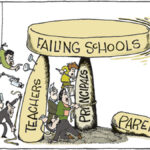






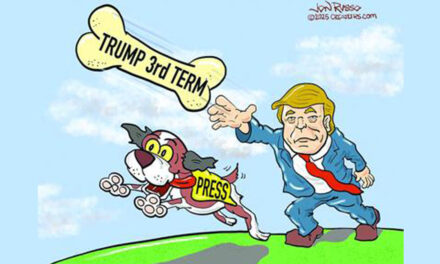
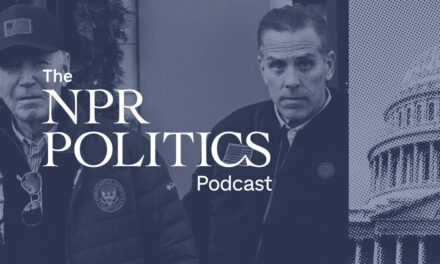



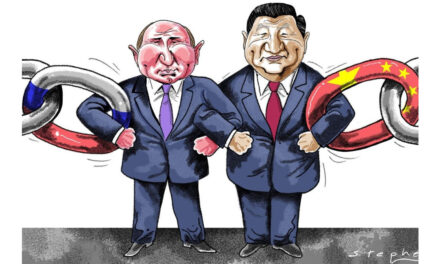



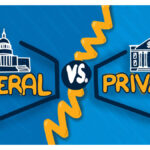

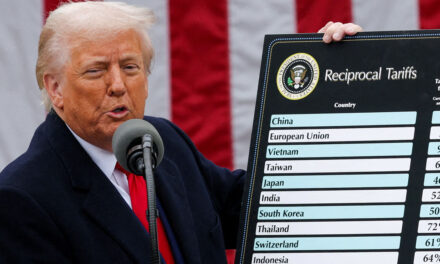

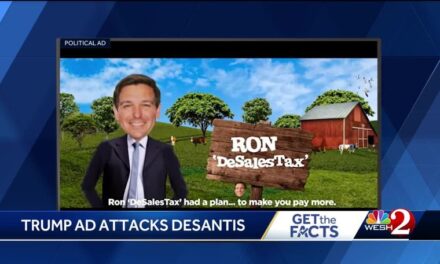
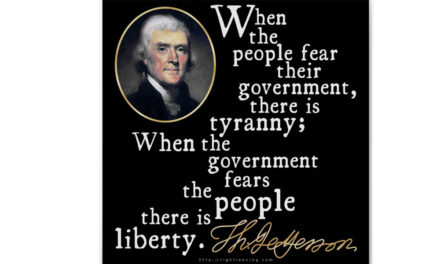

Hello, mcfly, anybody home…..
So, if you are in poverty and you get a helping hand, then you magically become above the line?
And if your kids get snap and free lunch, that’s like extra salary?
How about the fact that welfare since Clinton, has a time limit; how’s Gramm factor that in.
My take is if you are so stupid as to look at poverty numbers, then look at welfare and other benefits to figure out what’s going on, the publish two numbers, with and without and you can feel really good about how many you lifted from the suck below poverty to the suck just above poverty level.
Might be a good idea really to emphasize how the two levels of suck economic standing we have. Then publish how many of the suck work 40 hour weeks at walmart and mickey d’s so three numbers to be known as 1. Really sucks. 2. Sucks and 3. Sucks to be me. The last for the poor fucks who work to be poor, or almost poor at Gramm calls it.
Frank Dunger you you spout bullshit that has no merit whatsoever. There’s still plenty of people on welfare and always will be since democrats troll for victims.
Jim, perhaps attack the issues and not the person and you will have a more harmonious outcome and a teachable moment.
On this one you learned that you still dislike me. Good for you. You comment “here’s still plenty of people on welfare and always will be since democrats troll for victims” is a non sequitur to my comment and is just your personal opinion. I said nothing in my comment to illicit that. Your knickers were knotted well before you read my comment.
Yes, Jimmy, there is always plenty of people on welfare, I did not say there would not be. Democrats trolling for victims? WTF does that even mean. Whatever.
JIM:
What I said is Gramm’s idea might be really good IF they also published the current data on poverty as well. Plus, why not add the numbers on who is getting benefits so we can see 1. the true poverty number 2. gramms how many we lift out of poverty number. And 3. which I added: the number of people that work 40 hour weeks yet still are either in poverty or lifted out via benefits.
You may not agree, but certainly you can understand what I am saying.
The rest of your bullshit about bullshit is bullshit.
You’re ugly and your mother dresses you funny.
I think everything you just asked for is baked into the numbers presented. The result seems to be that we take very good care of our poor people, the new perspective is that perhaps some of these folks could be lifted into the work force and not only would they be better off, it could save money for the federal government.
But the real point is that all of the socialist people who throw our poverty percentages around are wrong. We conservatives are not the heartless bas#$ds they say we are.
“You’re ugly and your mother dresses you funny.” Stop acting like a child.
“We conservatives are not the heartless bas#$ds they say we are.” I have never called you a heartless bastard.
You still have not found the families for over 1,400 kids you separated.
I did not call you a heartless bastard.
You are disappearing innocents to an El Salvadorian prison to die.
I did not call you a heartless bastard.
If you believe being brought above the poverty line is “very good care of our poor people,” you try it.
You “think?” Sure, the fucking numbers are just like Gramm and I repped them out. The numbers are there for Gramm; he just wants to add the poverty benefits to the numbers of people below poverty to look better. Those people will still be below the poverty line needing these benefits to rise slightly above. He as the benefit numbers, he has the poverty numbers, he just want to add them together to cast a different poverty number. No magic, and all numbers as correct after, as they are now.
I actually said, print both, which I guess you see as gibberish.
Then I said, add in the number of people who work 40 hour weeks and STILL need benefits to get above the poverty line. Was that too much gibberish for you?
After all, more information is better than less, right?
No, the current poverty numbers are not work, they are just pre-benefits. No, Gramm’s numbers will not be wrong, they will just be post-benefits. And my adder will tease out the working poor, got a problem with knowing that piece of gibberish?
And nothing that Gramm is suggesting will change my mind about your character, the separated kids, the gulag disappeared innocents left to die, is pretty heartless. Fix it.
FYI: how come you online? Didn’t Trump ask you to come golfing with him as Wall Street burns, our 401ks are becoming worthless? Think he spent $24M on our taxes so far for golf.
I spell my name: danger. And he is Joe Gibberishson.
Yes, that is it, an agency determines that you are under the line from an income level and they give you stuff until you are above it.
Sorry, I would respond to the rest, but it seems to be gibberish…
Actually, you are slightly off.
SNAP benefits last from one month to three years, it’s no forever Joe. I think NJ capped at 24 months.
Kids can get them forever.
Wefare, or TANF is five years although States can make this shorter or longer. FL is 48 months.
Kids can get them forever.
IE — they don’t give you stuff forever which is why it’s better to break out the numbers than it is to bundle them so you can FEEL less heartless or better about all those people you brought just above the poverty level that you seem to think is fuckin-a-skippy.
Remember, it was Bill Clinton who signed off on the time limits. heh, heh.
I will note Democrats cried it was the end of the world as we know it and thousands would die. They did not. Republicans, the real ones, not you , were right.
there it tis and get rid off the potty mouth. You can be more mature than that.
Does it matter if the poor below or above the poverty line are registered to vote. If they are registered is it important to conservatives, ,the party the poor identify with. My point is, these folks are poor Americans and deserve the support to meet basic needs: food, clothes, shelter, and medical security.
Have you, Gilbertson, known anyone attempting to live below, at, or just over the poverty line set by well to do pencil pushers? Do you know what condition someone in that economic status lives like? I doubt you have. If you had experienced by sight only what poverty really is and looks like smells like and has you feeling like. After leaving and arriving back in your own home and the condition that’s everyday usual and normal for you. How did you feel?
The empathetic person would want those folks to have more and live better. That person should remember the experience and work with a changed opinion of the poor and under represented American citizens.
All to often there are a series of hurtles people unaccustomed to conversing with people very different from them. Racial, body type, education level, lifestyle, speaking clarity, and home address’s neighborhood tend to create uncomfortable conditions for you, the one time only visitor. Think about the way the poor person feels with you a well todo white person. All people have a degree of pride no matter their level in society’s pecking order. Think about how you would feel if one day Elon Musk dropped in for a passing visit. Would you have some misgivings about yourself afterwords.
My experience with repeated visits and conversations with underprivileged economically poor individuals was always memorable. In fact meeting individuals, families, and church groups influenced my worldview for life. 50 plus years later that impression formed then has stayed firm and clear.
The Trump administration’s actions to date and proposed termination of agencies that help those with the least resources has severe consequences. If you and your cohorts at PBP don’t appreciate being told you are heartless for your support of Trump’s bulldozer approach on 250 years of successful democracy in less than two months time.
Trump’s idea seems to push for total capitulation of the left, and therefore the demise of democracy in America.
When Trump promised his wealthy chums tax relief that promised greater wealth apparently he added “”whatever it takes”. He’s well on his way to the day he envisions delivering his promise on a golden plater.
As most of Trump’s actions have been ironic of hyperbolic proportions. On the list of the wealthiest individuals Elon Musk is at number one, obviously. Trump landed on number 700. While 700 is the envy of 699 on down the high powered list. Still 698 spots separate Donald from Elon and the three seen standing behind Trump at the swearing in ceremony.
Common sense critical thinking individuals are not distracted by Trump’s subterfuge with media his pawns.It’s Trump classic and his personal ruling concept since birth. It’s all about making money in the millions and billons, whatever it takes. His father convinced his son that money was the gateway to influence and power over others. But, the rule in the power game is piles of money. More money piles that add up into 100’s of millions buy power in ever higher levels of government. Trumps piles of money came and went in numbers over the years. At nearly70 he finally launched his most extravagant purchase of his life. Trump 1.0 came about because his money had influence. Trump 2.0 required a greater number of money piles.So, Trump recruited the top four richest suspects with great promises of tax relief. Trump had his chums buy the presidency (unprecedented in election history) and with breath taking speed Trump set about making good on his great promises to his chums. Interlaced with satisfying the 1% Trump slid in EO’s that supposedly made good on some campaign promises at the margins. The 70 some million voters Trump claimed in the election are pleased while the majority of American understand what getting politically screwed wrongfully feels like.
I’n not to long a time Americans who support Trump will wake up from Trump induced political coma and realize the ruse Trump has been playing. Americans are deeply loyal to democracy, our Republic, and the U.S. Constitution. Trump has and is no fan of law and order. Those things he has factored in as small inconveniences in the primary cause, making a wealthy pile of cash using other people’s money. Power was going to follow.
Trump lies so consistency that he believes the lies. That worked for him and it seems to have worked on enough Republicans to have them vote for him.
People from every level of financial income are impacted negatively in our country from Trump’s faulty vision. Some may believe Trump follows the conservative ideology. Trump is not and never was a conservative ideologue. In New York his was a registered Democrat. His party switch came about after he was counseled to pursue his political fantasy in the Republican Party. His counselors saw a leadership vacuum in the GOP and invented the MAGA promotion and a few speaking points with which he could leverage his plan into taking the White House.
Trusting Trump is a fools game case in point is his history with multiple wives. They discovered his transactional purpose in relationships. Unfailing loyalty to him personally and everything he proposes, legal and ethical processes did not always have priority. Parting ways with Trump is perilous and suicidal for one’s career.
Trump is unforgiving, vindictive, revengeful, never forgets a slight or a contrary word in-the media.
Doubtful anyone will read this comment as no one usually posts comments afterwards.
Apparently silence is golden. It’s preferred to being denigrated, HA HA.